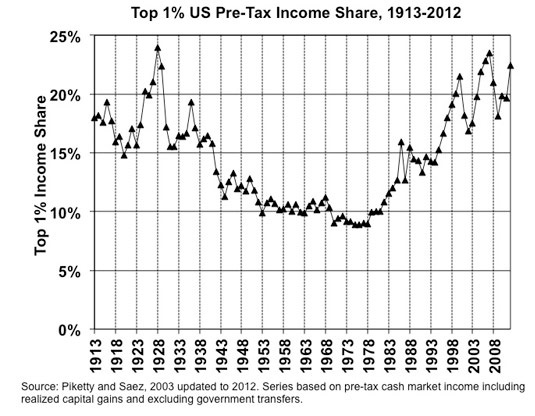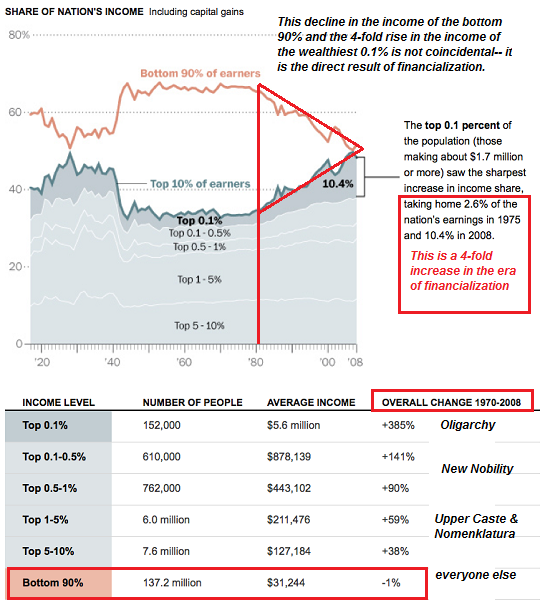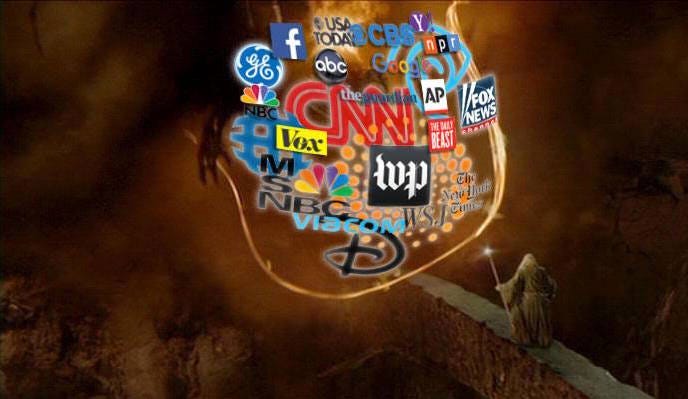ORIGINAL LINK
Last year, I explained why it is wrong to consider weakening speech protections to allow bans on speech by the alt-right, neo-Nazis, or other far-Right groups: it is safer to let Nazis speak in a society that places high value on individual rights and has strong legal protections for those rights than it is to risk letting Nazis take control of institutional power in a society where protections on individual rights have been eroded. I explained, with specific examples, how easy it would be for a far-Right regime to turn restrictions on violent or hateful speech against its enemies.
However, since then, while free speech has remained a controversial topic, the focus of the debate has moved away from restrictions on speech by state actors, and toward the question of how corporate entities that privately control the platforms which host a great deal of our speech and debate should regulate and moderate their users.
These platforms are not bound by the US Constitution or by other legal regimes that protect private speech from state coercion, but their rule-making processes should be guided by the same principles that led all Western democracies to implement strong protections for speech—even speech that others may find offensive.
Control of Speech on Social Media
For most of modern history, states have been the only institutions with the coercive power to restrain speech, and so most policymaking related to free speech has focused on what the limitations on that state power should be.
In the United States, the Constitution permits almost no regulation of private speech by the government, with a few very narrow exceptions for defamation, “fighting words” or incitement to violence, obscenity, and regulation of commercial speech to prevent false advertising. Other Western states permit the regulation of some categories of hate speech, but most still have fairly robust free speech protections.
However, in the last decade, the public square has been privatized by social media networks. These companies—primarily Google (which owns YouTube), Facebook (which owns Instagram), Apple (which controls access to lots of content through its App Store and its Podcast app), the crowdfunding platform Patreon, and Twitter—have offered platforms to billions of people and created media ecosystems that support the livelihoods of many content creators who may not have previously had the opportunity to be media professionals. But the livelihoods of people who professionally produce content disseminated over social media, as well as the smaller platforms of millions of other non-professional users of these networks, are now subject to the whims of these companies.
These networks have already demonstrated the power they can wield over the fortunes of content creators. The influence of figures like Milo Yiannopoulos and Alex Jones waxed as their follower and subscriber counts grew into seven figures on networks like Twitter, Facebook, and YouTube. But their reach waned considerably after those networks banned them and stripped them of access to their platforms. Yiannopoulos is now said to be millions of dollars in debt and peddling a self-published 96-page book entitled How to Be Poor. It’s a little simplistic to attribute the fall of Milo to the loss of his Twitter platform; while Milo’s influence may have begun to crumble after his Twitter ban, subsequent outrage over his statements about child abuse caused a conservative publishing imprint to cancel his book and CPAC to cancel his appearance, and public revelations of Milo’s connections to white nationalists caused the billionaire Republican fundraiser Robert Mercer to yank his support from Milo Inc. But in the wake of high-profile bans like Jones’s, numerous less-prominent creators have had their income streams disrupted by various YouTube demonetization waves, as a result of YouTube cracking down on content creators to assuage the fears of advertisers.
In 2018, Patreon banned anti-feminist YouTuber Carl “Sargon of Akkad” Benjamin, who had been earning $12,000 per month on the site, after he used a racial epithet to describe white-nationalists, who he said had assumed the negative qualities they impute to groups they hate. Despite the fact that the epithet had not been directed at a black person, Patreon determined he had violated its rules. Sam Harris, Dave Rubin, and Jordan Peterson, who were all earning good money through the platform, left in protest. Peterson is launching a new platform called Thinkspot, which Rubin and Benjamin will be joining. However, they likely lost hundreds of thousands of dollars in income as a result of leaving the more popular Patreon platform.
Recently, Carlos Maza, a progressive host and producer of Strikethrough, a Vox media web show, complained that YouTube should punish the right-wing comedian Steven Crowder for harassment. Crowder had been uploading clips rebutting Maza’s Strikethrough videos, and Crowder often mocked Maza with schoolyard insults that referenced Maza’s sexuality and ethnicity. After YouTube determined that Crowder’s videos had not violated its policies, Google experienced extensive blowback from both social media users and mainstream media. In response, YouTube promulgated a new set of policies banning racist videos and denials of events like the Holocaust and the Sandy Hook massacre. They demonetized Crowder’s channel for linking to a merch store that sold a t-shirt with an offensive epithet printed on it.
Activists who sided with Maza weren’t satisfied with YouTube’s response, and have demanded more decisive action. And, fanning the flames of outrage, the New York Times ran a major feature contending that YouTube permits a flourishing ecosystem of far-Right creators on its platform, and that its recommendation algorithms push impressionable viewers toward extreme content. The implication is that YouTube should do something to change this.
Meanwhile, Twitter is conducting research into how white nationalists and other far right groups use its service in response to widespread calls for the service to ban Nazis.
Social Media’s Existing Rules
Social media platforms already have more restrictive speech codes than most Western states. All platforms have rules barring content that promotes violence or terrorism. Facebook and Instagram prohibit white nationalism, white supremacy, and hate groups. YouTube has a policy against threats of violence as well as harassment and cyberbullying that “crosses the line into malicious attack,” but does not remove videos that are merely “annoying or petty.” Twitter has anti-harassment rules which bar targeted harassment and “hateful conduct.”
Milo Yiannopoulos was permanently banned from Twitter for harassment after he posted doctored screenshots of tweets that made it appear that Saturday Night Live and Ghostbusters actress Leslie Jones had said provocative things. These images incited angry mobs of his fans to brigade in Jones’s mentions and bombard her with racist invective.
After a video of the beheading of captured journalist James Foley was circulated on social media in 2014, social media platforms began cracking down on ISIS under policies barring terrorism and posts and tweets supporting terrorist groups. Twitter banned hundreds of thousands of ISIS-promoting accounts, and unleashed automated systems to purge terrorist accounts from its services. However, the algorithm hit a lot of false positives, including Arabic-language broadcasters, antiterror watchdog groups, and regular users who were flagged by the software for various reasons. This outcome was considered preferable to allowing terror groups to use the platform as a propaganda tool.
Some users and media outlets, as well as workers inside Twitter have argued that white nationalists should be considered a terror threat similar to ISIS in the wake of violent attacks by far-right activists in Charlottesville, Virginia, at the Tree of Life Synagogue in Pittsburgh, and against two mosques in Christchurch, New Zealand. Therefore, they believe it is appropriate for the auto-ban algorithms that Twitter used against ISIS to be deployed against the far-Right. A minor firestorm erupted in April 2019, when Vice’s Motherboard vertical reported that Twitter won’t turn on the algorithms to purge white nationalists the way it did for Islamic State terrorists because it fears some of the false positives will be Republican politicians.
But while the spin was that Twitter felt white nationalists were indistinguishable from Republicans, Twitter’s concern actually seemed to be that it is difficult to draw the line between the unacceptable far-Right and the acceptable mainstream Right in a way that a computer can understand. And, if the algorithm were turned loose, the same blunt tool would probably hit a bunch of mainstream media outlets as well.
For example, David Neiwert, a DailyKos reporter who covers the far-Right, was recently banned from Twitter over his book cover, which depicts the American flag with little Klan hoods on all the stars. Similarly, a history teacher whose channel contained archival footage of Nazi rallies from the 1940s, was banned from YouTube after the platform implemented new policies against hateful content in the wake of the Maza/Crowder dustup. These bans were implemented by human moderators, who are typically low-paid contract workers who must rigidly apply a detailed set of policies to the content they moderate with little leeway for discretion. If these platforms used algorithms to ban people, the false positives would likely increase.
And anyway, Twitter doesn’t need to deploy its algorithms to find prominent white nationalists and far-Right personalities like Richard Spencer, Faith Goldy, and Stefan Molyneux, because it knows exactly who they are and it allows them to remain on the platform. Why? Because, they aren’t breaking its rules.
So, to get rid of them, there will need to be new rules.
Ban Nazis. Then What?
The thing about Nazis is that they’re not all illiterates bellowing epithets at minorities and tweeting gas chamber memes at journalists. Many of the most prominent alt-right figures promulgate their ideologies without calling for violence, without targeting individuals for harassment, and without tweeting anything that explicitly runs afoul of the hateful content policies of Twitter and YouTube.
Richard Spencer, the white nationalist who coined the term “alt-right,” has lately been calling for more explicit speech codes on Twitter and YouTube, so he can form a new “code or lingo” with which to spread his ideology under this new more restrictive regime. It makes sense that Spencer would be skeptical of the idea of free speech, because he holds the basic premises of liberalism in contempt. This is something he has in common with the people who want to ban him. Spencer accepts that those in power will restrict his speech, because if he were in their position, he’d do the same.
So Spencer invites speech codes because he prefers a rigid set of rules to a more nebulously-defined set of principles that will simply declare his ideology to be forbidden and ban him for being persona non-grata, without needing to find him responsible for any specific rules violation beyond just generally being Richard Spencer.
That’s what Facebook did in 2018 by banning “hate organizations.” It banned Spencer’s pages as well as those of other prominent white nationalists after journalists from Vice asked Facebook why a number of organizations branded as hate groups by the Southern Poverty Law Center (SPLC) were still on the site. This is the rule a lot of activists would like to see implemented at Twitter, and the effects of such a rule seems to be what Twitter is currently “studying.”
But Twitter’s current approach is right, and Facebook’s is wrong. Spencer was banned from Facebook because his National Policy Institute was labeled a hate group by the SPLC. But the SPLC has credibility problems of its own. Its list of hate groups has included Christian organizations that oppose gay rights like the Family Research Council and the Alliance Defending Freedom (ADF), a conservative Christian lawyers’ group. As a result of being labeled a hate group by SPLC, the ADF was barred from receiving charitable donations through the AmazonSmile program.
In 2018, the SPLC paid $3.4 million to settle a lawsuit filed by the counter-extremist Muslim organization Quilliam and its founder, Maajid Nawaz, after the SPLC erroneously included them on a list of anti-Muslim hate groups. That wasn’t the first time the SPLC had experienced such a controversy; in 2015, it named surgeon, former Republican presidential candidate, and current US Housing Secretary Ben Carson an “extremist.” The SPLC later removed Carson from its “Extremist File” and apologized to him. Even if the SPLC is right about Spencer’s organization, do we really want this group making arbitrary determinations about who can use social media?
And once the censors have finished prohibiting white nationalists, which other ideologies will they forbid? The people crying loudest for censorship have long lists of enemies. Once they deplatform the alt-right, they’ll certainly be coming for gender critical feminists, immigration and security hawks, Tucker Carlson, and probably Ben Shapiro, who is often erroneously labeled “alt-right” by progressives, even though the alt-right hates him because of his identity as an Orthodox Jew and because of his politics, which are opposed to white nationalism.
Here is where they get around to me: I’m Jewish, so I’m not a big fan of Nazis. But I’m also pretty skeptical of progressive activists, because when they can’t find a Nazi to punch, they often settle for punching Jews. You see, while the far-Left hates the alt-right, it also hates the state of Israel. Because of this, gay Jewish groups have been banned from LGBT marches, campus Jewish organizations have been aggressively protested, American Jews have been accused of dual loyalty by members of Congress, and NYU’s Department of Social and Cultural Analysis voted to boycott their university’s own satellite campus in Tel Aviv.
I believe Israel has a right to exist as a Jewish state, and that is a hateful view to many progressive activists. They believe that Israel is an apartheid regime, that Palestine must be free from the river to the sea, and that, therefore, Jewish groups that support Israel are hate groups. All it takes to get Jews who support Jewish organizations like Hillel, B’nai Brith, Birthright Israel, and the Jewish Federation banned from Facebook is for some activists from Students for Justice in Palestine to go work at SPLC and get these organizations added to its hate list.
That may seem implausible; these are mainstream organizations, and support for Israel is a mainstream view. But progressive opinion on Israel has shifted dramatically in the last five years. It is common for progressives to view Zionism as synonymous with white supremacy, and progressive activists are already accusing mainstream Jewish charities of being hate groups.
Richard Spencer hates me. But in order to muzzle him, I’d have to grant censorious power to people who hate him, but who also hate me. And they won’t stop at the groups I’ve mentioned. They’ll go after mainstream conservatives, and they’ll go after center-Right people like New York Times columnists Bari Weiss, David Brooks, and Bret Stephens. They’ll cancel Joe Biden. They’ll deny a platform to everyone to the right of Chapo Trap House, because, like Richard Spencer, they do not believe in free speech and they do not value the rights of people who disagree with them. Their cause is righteous, everyone who stands against them is a villain, and their creed doesn’t permit tolerance of dissent.
It’s Not Worth It
In 1977, a group of Nazis decided to hold a march in Skokie, Illinois, a heavily Jewish Chicago suburb that was reputed to have more Holocaust survivors than any place outside of Israel. The planned march met with strong resistance, and state courts issued injunctions to prevent it from happening. But a Jewish lawyer from the American Civil Liberties Union named David Goldberger took up the case to defend the Nazis’ right to speak and assemble. Members of the ACLU’s board quit in disgust over the organization’s decision to represent the Nazis, but Goldberger believed that free speech was free speech, even for the most revolting figures. His view prevailed in the Supreme Court, and the Nazis were allowed to march.
When the event finally occurred in 1978, only about 20 Nazis showed up, and they were met by 2,000 counter-protesters. They dispersed after about ten minutes. What was so dangerous about letting this small group of clowns march around for a few minutes, that it was worth compromising a fundamental liberty?
And, on the same note, is it so dangerous to let Richard Spencer shitpost on Twitter that stopping him is worth giving up on the idea of social media being a forum for the free exchange of opinion? His arguments do not seem to be gaining much traction. The 2016 convention of Spencer’s National Policy Institute, held less than two weeks after Donald Trump’s victory, drew a crowd of only about 275. The 2017 Unite the Right rally in Charlottesville, one of the largest gatherings of far-Right activists in decades, which devolved into violent clashes during which a Nazi murdered a counter-protester with his car, had only about 500 attendees from a range of far-Right groups. And when the organizers of the Charlottesville rally decided to hold a second Unite the Right event in 2018, only a few dozen far-Right activists showed up. By contrast, Bronycon, the convention for adult men who are fans of the television program My Little Pony: Friendship is Magic, drew a crowd of 5,500 attendees in 2018. For every Nazi in America, there are eleven Bronies. Media outlets that fixate on the far-Right are vastly overstating the influence of these groups.
Given that the alt-right is really just a handful of angry dudes who can’t gather enough people in one place to fill a medium-sized hotel ballroom, the only decent argument that they’re a real threat revolves around the idea that they groom and radicalize mass shooters and other terrorists. Alex Fields, the Unite the Right killer, was obviously affiliated with far-Right groups. Robert Bowers, the Tree of Life synagogue shooter, was obsessed with the idea that Jews were supporting illegal immigration as a way of fomenting “white genocide.” Brenton Tarrant, the Christchurch shooter, left a 74-page manifesto full of racist rants and memes about “gorilla warfare,” which suggested he’d spent a lot of time on 4Chan.
But long before the alt-right or social media, violent lone psychos justified attacks with all sorts of fringe politics, and mass shootings in the past have been blamed on rap music, video games, and The Catcher in the Rye. If you ban every category of expression that might inspire some nutcase to do something violent, you don’t have individual rights anymore. If any of the far-Right voices on social media were directly connected to any act of violence, they would be guilty of crimes and they would be banned from social media under the existing rules (and probably sent to prison). But none of them calls for violence on any of these platforms and the evidence of a causal connection between far-Right YouTube videos and mass-shootings is tenuous. Political speech is the most important category of speech and it is the first category of speech authoritarians will seek to constrain as they consolidate power.
I say let the Nazis speak. There is no evidence that the alt-right’s propagandists can turn impressionable YouTube viewers into deranged mass-shooters. We have little to fear from open debate. Let the Nazis preach white separatism and white supremacy. Let them deny the Holocaust. Let everybody see how full of shit they are. Let them openly sell a product nobody wants. These ideas have been around for decades, and few people are persuaded by them. There is significant reason to believe that Twilight Sparkle will prevail over the alt-right in the marketplace of ideas.
Daniel Friedman is the Edgar Award-nominated author of Don’t Ever Get Old, Don’t Ever Look Back, and Riot Most Uncouth. Follow him on Twitter @DanFriedman81
The post How Free Speech Dies Online appeared first on Quillette.
via
IFTTT
InoreaderURL:
SECONDARY LINK






 In one of the largest mass rights violating instances we've ever reported on, an entire bar was detained by police and forced to submit to a background check.
In one of the largest mass rights violating instances we've ever reported on, an entire bar was detained by police and forced to submit to a background check.
